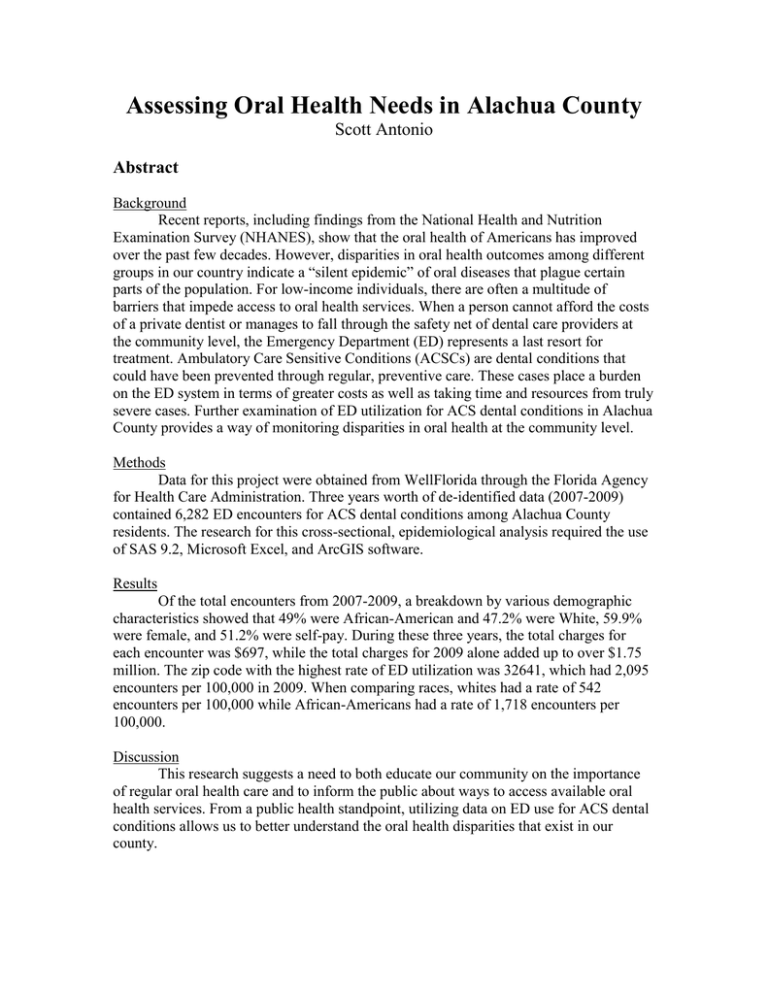Assessing Oral Health Needs in Alachua County Scott Antonio Abstract
advertisement

Assessing Oral Health Needs in Alachua County Scott Antonio Abstract Background Recent reports, including findings from the National Health and Nutrition Examination Survey (NHANES), show that the oral health of Americans has improved over the past few decades. However, disparities in oral health outcomes among different groups in our country indicate a “silent epidemic” of oral diseases that plague certain parts of the population. For low-income individuals, there are often a multitude of barriers that impede access to oral health services. When a person cannot afford the costs of a private dentist or manages to fall through the safety net of dental care providers at the community level, the Emergency Department (ED) represents a last resort for treatment. Ambulatory Care Sensitive Conditions (ACSCs) are dental conditions that could have been prevented through regular, preventive care. These cases place a burden on the ED system in terms of greater costs as well as taking time and resources from truly severe cases. Further examination of ED utilization for ACS dental conditions in Alachua County provides a way of monitoring disparities in oral health at the community level. Methods Data for this project were obtained from WellFlorida through the Florida Agency for Health Care Administration. Three years worth of de-identified data (2007-2009) contained 6,282 ED encounters for ACS dental conditions among Alachua County residents. The research for this cross-sectional, epidemiological analysis required the use of SAS 9.2, Microsoft Excel, and ArcGIS software. Results Of the total encounters from 2007-2009, a breakdown by various demographic characteristics showed that 49% were African-American and 47.2% were White, 59.9% were female, and 51.2% were self-pay. During these three years, the total charges for each encounter was $697, while the total charges for 2009 alone added up to over $1.75 million. The zip code with the highest rate of ED utilization was 32641, which had 2,095 encounters per 100,000 in 2009. When comparing races, whites had a rate of 542 encounters per 100,000 while African-Americans had a rate of 1,718 encounters per 100,000. Discussion This research suggests a need to both educate our community on the importance of regular oral health care and to inform the public about ways to access available oral health services. From a public health standpoint, utilizing data on ED use for ACS dental conditions allows us to better understand the oral health disparities that exist in our county.



